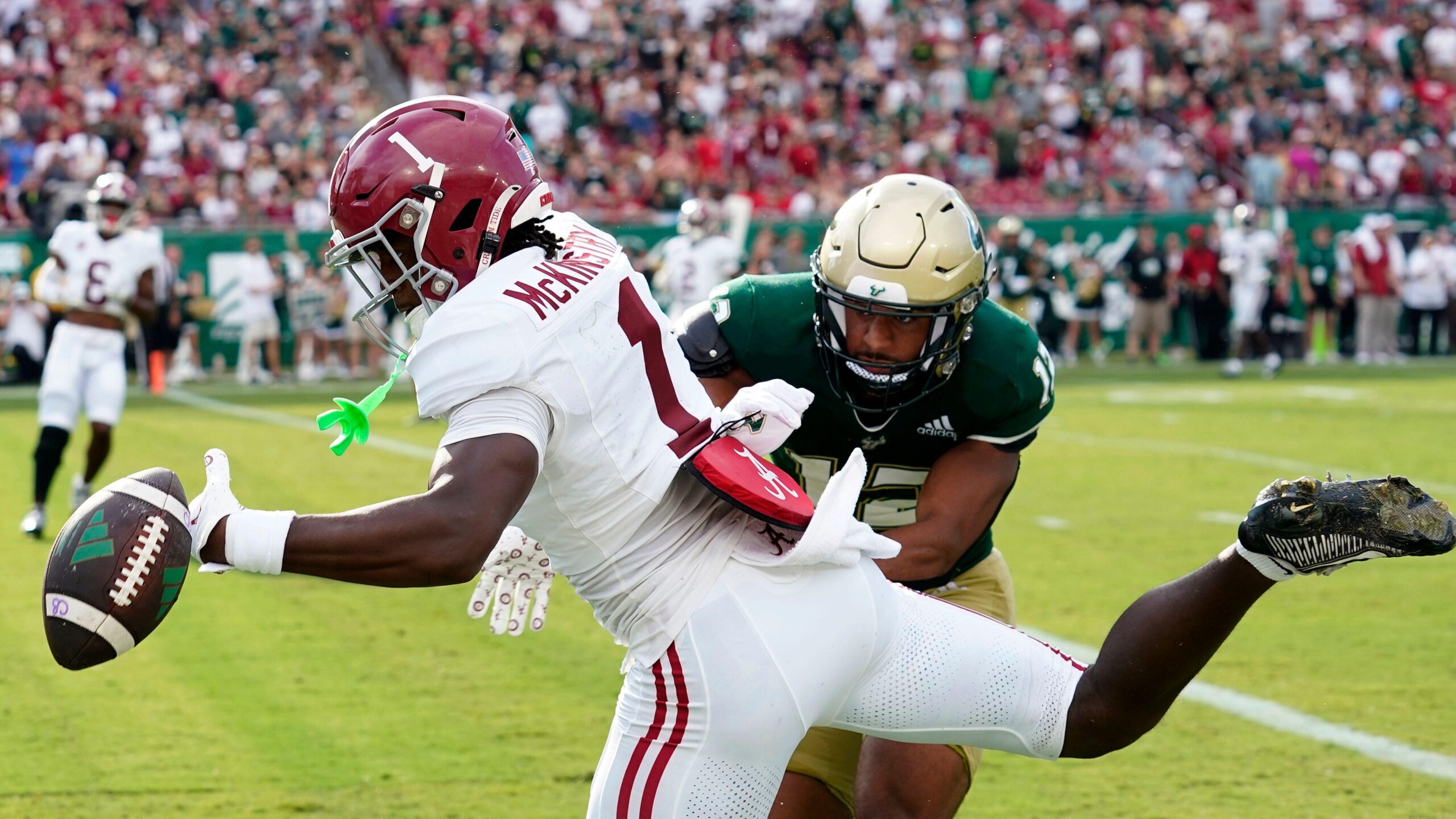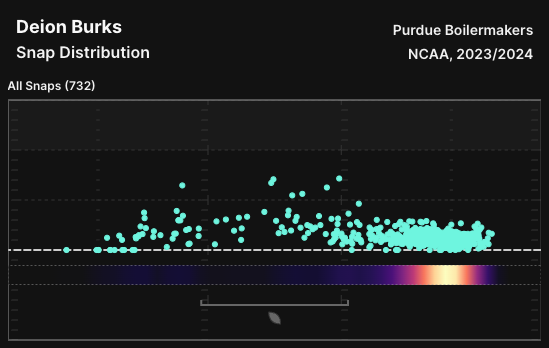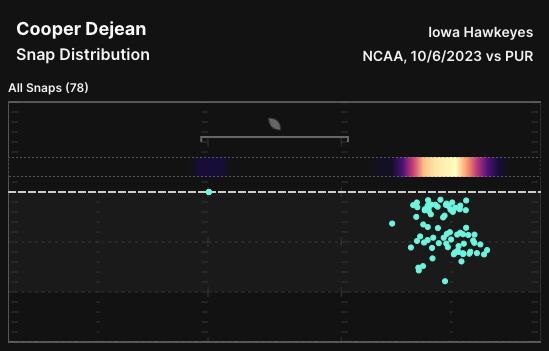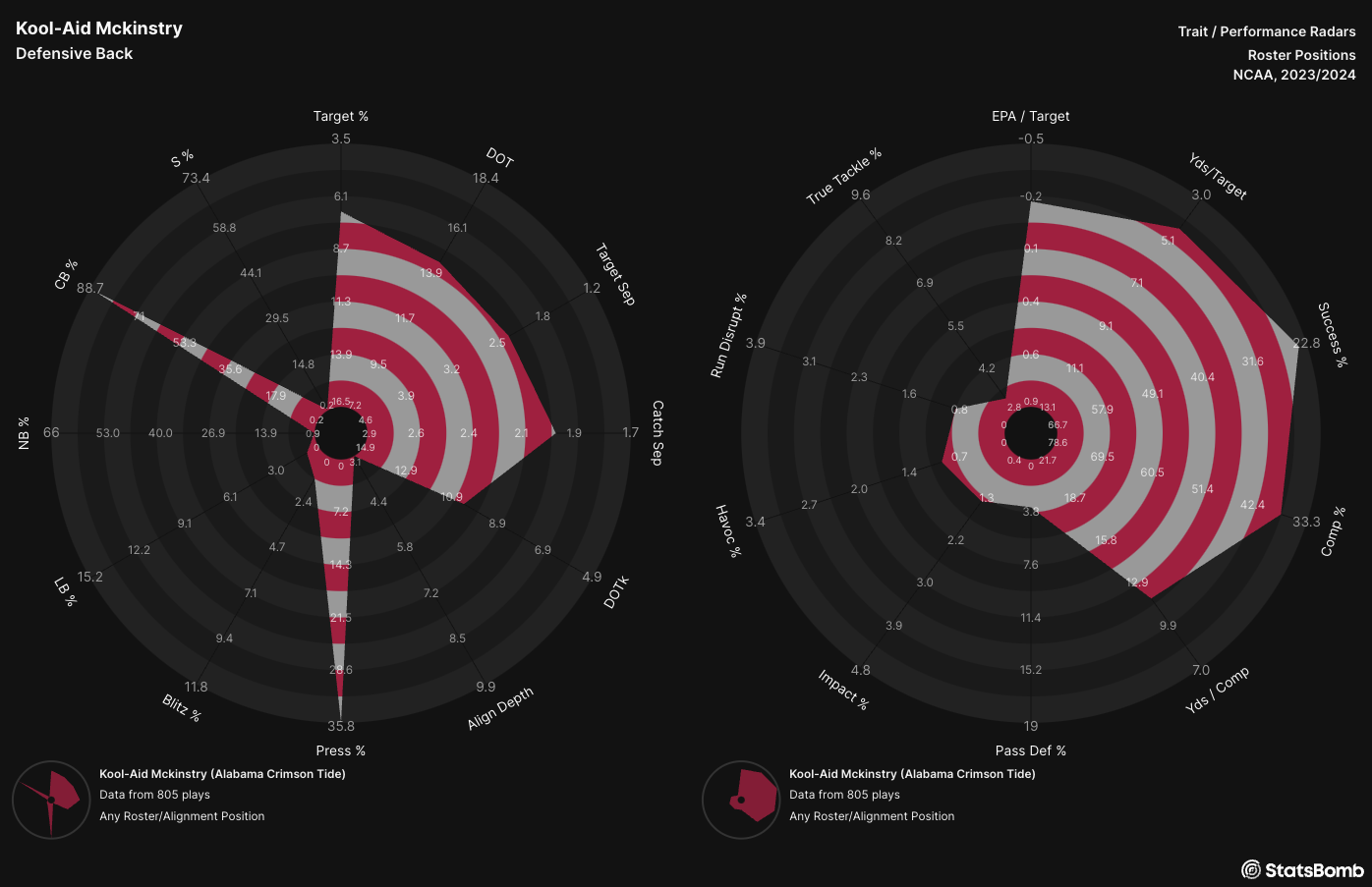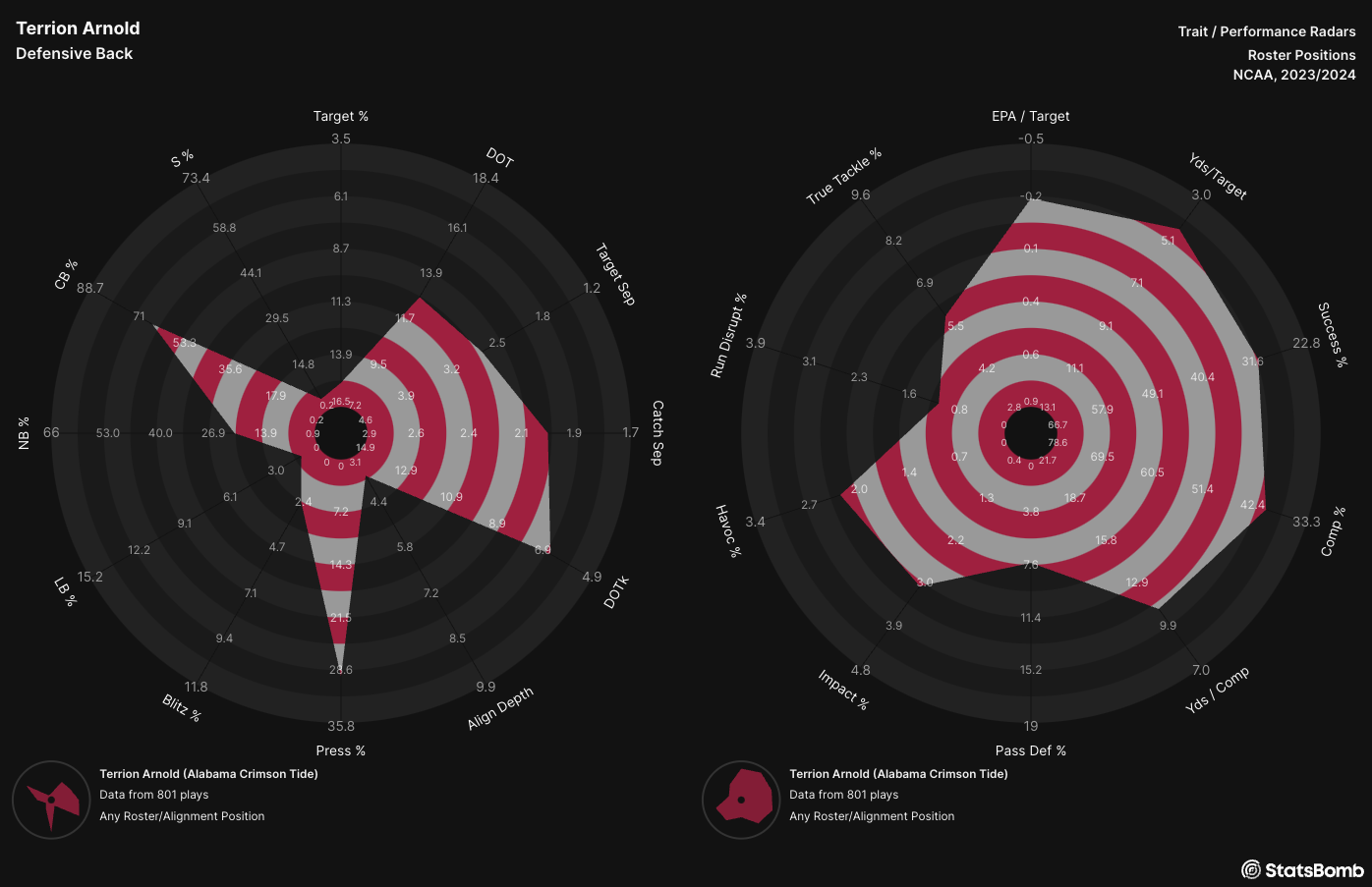NOTE: Following Hudl’s acquisition of Statsbomb, its football platform is now called Hudl IQ. Learn more about the acquisition here.
Positional flexibility is all the rage in the NFL. Teams are looking for players who can do multiple things and are difficult to gameplan against. I once worked for an offensive coordinator who loved to say, “the more you can do, the more you can do.” It sounds trite, but players with the ability to perform different roles on the field can be used in a wider variety of situations and utilized in different ways.
Typically, it's the offensive side of the ball that gets the attention here. Super Bowl finalists, the 49ers are a great example of positional flexibility on offense with Christian McCaffrey, Deebo Samuel, and Kyle Juszczyk helping them to be creative formationally while staying in one personnel grouping. As the graph below shows, most NFL offenses had a higher EPA/play while using some sort of formational oddity.
Between CMC, Deebo Samuel, Kyle Jeszczyk, and George Kittle, the @49ers have one of the most interchangeable offensive personnel groupings in the NFL.
Across the NFL, teams have more success when aligning players up in non traditional roles.
Creativity -> Success pic.twitter.com/Eg9eRA5i0f
— StatsBomb Football (@StatsBomb_FB) January 30, 2024
Defense is a little bit different. There has always been a little more fluidity when it comes to defensive positions. Depending on the “base” defensive scheme, Outside Linebackers and Defensive Ends can potentially have very similar jobs. Hence the increase in using Edge and Interior Defensive Line to define groups. When teams get into 5 defensive back sets the nickel defensive back is sometimes a safety, but can also be a corner. We do know however, that people are regularly searching for defensive backs who can fill that very important nickelback role.
One of the biggest plays of the Super Bowl came on 3rd and 4 with 2 minutes left in the 4th Quarter. Trent McDuffie bluffed dropping into coverage before the snap, before getting a head start on his blitz from the nickelback position. As he blitzed, Purdy was rushed and threw into a leaping McDuffie’s hands, forcing the 49ers to settle for a Field Goal. This was among several great plays that McDuffie made. He broke up a pass on a well-guarded pass to Deebo Samuel in the End Zone as well. His ability to both play well in coverage, and rush the passer is the exact type of positional flexibility teams are looking for.
Mike Sainristil
One player especially popped in trying to find players who had similar traits to Trent McDuffie. That player was on the Michigan team that beat McDuffies Washington Huskies in the National Championship: Mike Sainristil.
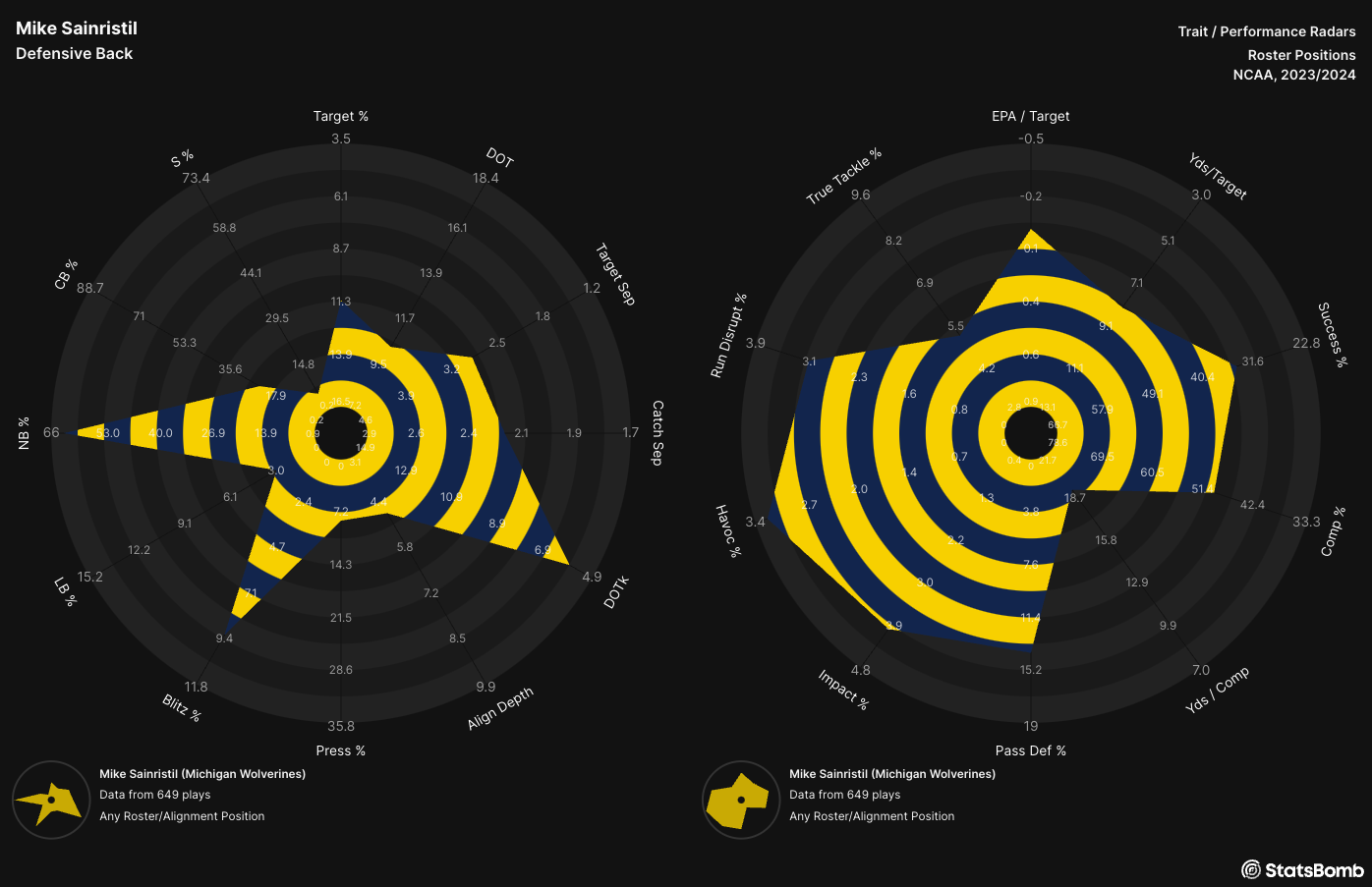
Sainristil embodies the positional flexibility moniker, and not just defensive flexibility. He played WR for the Wolverines for his first two seasons before switching to DB. But strictly looking at his defensive versatility, he is able to blitz effectively, play in the slot, and play with good coverage when he is asked to guard opposing receivers. He is a little smaller than McDuffie is, and that is one reason he is not projected as a 1st round pick like McDuffie was. But Sainristil has a chance at the NFL Combine to show his athleticism and why teams should take a longer look at him.
Cooper DeJean
The Iowa Hawkeyes were the Big 10 runners-up this season for one main reason, the defense and special teams. A key player on both of those units was Cooper DeJean. DeJean had a game-changing punt return TD to help secure the victory against Michigan State and another potential game-winning TD called back against Minnesota. His return chart is below (and is just a way for me to shamelessly plug our Special Teams data!)
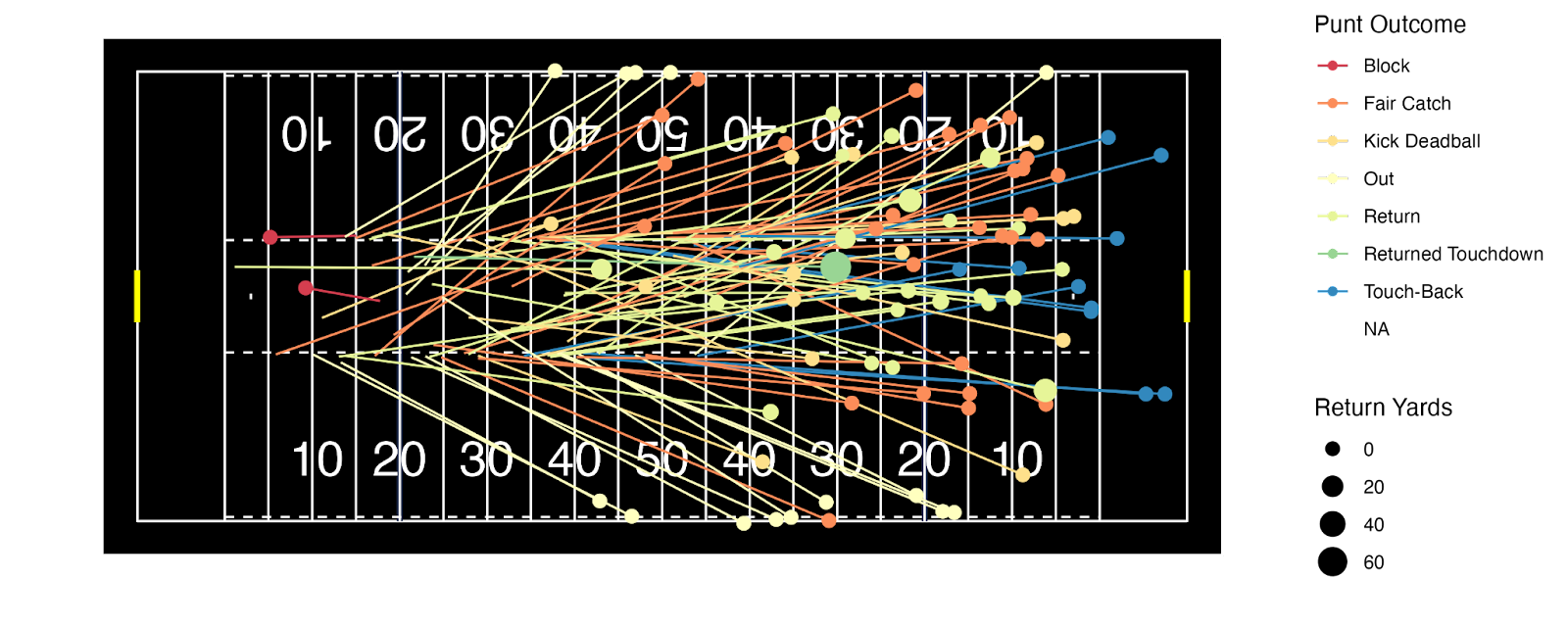
One of the more interesting things for me is when players line up and play one side of the field exclusively. Iowa’s defense is set up so that players play on one side of the field instead of playing field or boundary. DeJean lined up on the defensive left side of the field almost exclusively.
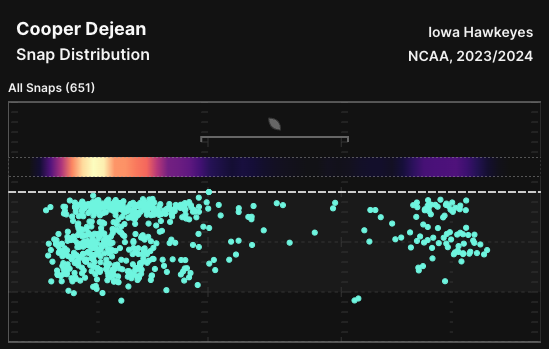
In fact, he only lined up on the other side of the field in one game: Purdue. And wouldn’t you know it, that’s where Deion Burks lined up.
Since we did a quick comparison to Trent McDuffie for Mike Sainristil, let’s take a look at someone in the NFL for DeJean. I wanted to look at someone played similar roles to Dejean, similar press %, similar left/right %, and Sauce Gardner of the Jets was the closest comparison to how DeJean has played. It is incredibly difficult to step in and be the type of corner that Sauce was from day 1, and DeJean has hands full with the jump to the NFL. At least he will have a great source of tape to watch him as he prepares for the next level.
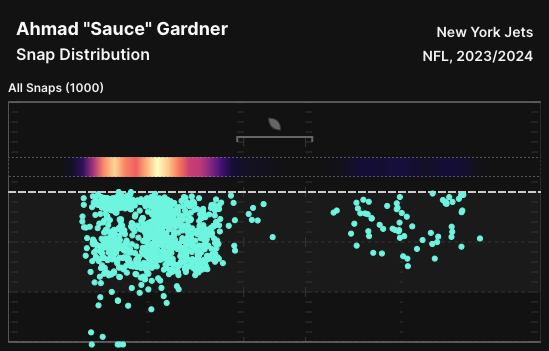
Kool-Aid McKinstry and Terrion Arnold
I'm not sure we could have a preview article and not talk about two teammates who have the chance to be only the 2nd pair of cornerback teammates drafted in the 1st round of the NFL draft in over 20 years.
Continuing the comparison with Sauce Gardner, we have another food-based nickname: Kool-Aid McKinstry. Kool-Aid has been on everyone’s radar for a long time. He was the number one CB recruit in the country, committed to Alabama, and was starting by the end of his Freshman season. With a name like Kool-Aid, you better be able to back it up with your play.
One of Kool-Aid’s biggest strengths as a corner is his ability to press. He aligned in press coverage 8th most in FBS in 2023. Not only does he press a lot, he is good at it as well. In man coverage situations where the player is pressing, McKinstry allowed the 6th lowest target %, and the 10th lowest target separation (minimum snaps permitted).
The last thing to note for McKinstry, his closest player comparison in FBS for performance only last year…Cooper DeJean.
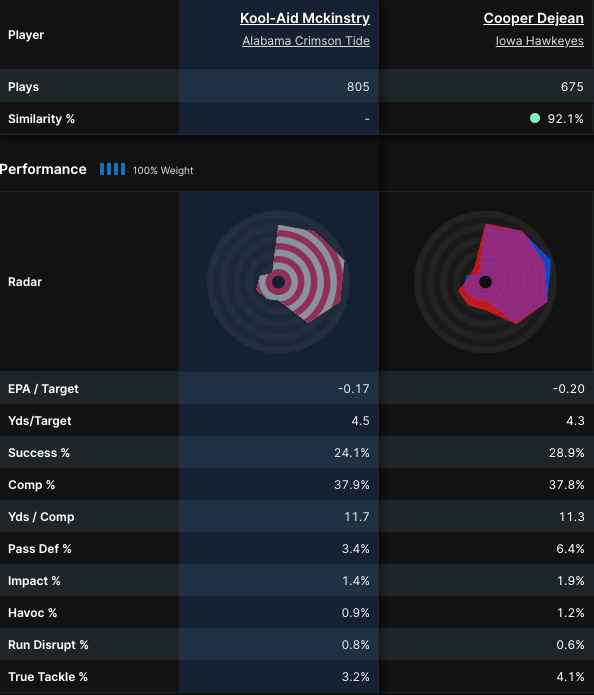
The other half of the duo Terrion Arnold is no slouch either. Arnold is projected as the 1st corner taken in the draft by Grinding the Mocks (@GrindingMocks). His radar looks very similar to McKinstry’s except for one area, havoc and impact plays. A havoc play is a play where a player records a run disruption, run stuff, sack, pressure, PBU, interception, forced fumble, or fumble recovery. And an impact play is when a player has a solo tackle, havoc play, or is the targeted defender on an unsuccessful play by the offense. In short, Arnold has a bigger impact on creating negative plays than McKinstry did. In looking for a good comparison to an NFL player, Arnold’s EPA/play, low yards/target, completion % allowed, and impact % numbers were very similar to Denzel Ward.
Conclusion
The top NFL offenses are deploying attacks that move players around, and having these players do different things to attack defenses. Tight Ends have been doing it for years, and now other positions are getting in on the action. Defenses need to continue to look for versatile players in the Draft and Free Agency that can do multiple things. To update the quote from my former OC, “The more a defensive back can do, the harder it is for an offense to prepare against.”
Matt Edwards
Head of American Football Analysis
matt.edwards@statsbomb.com
@thecoachedwards on X (Formerly Twitter)

